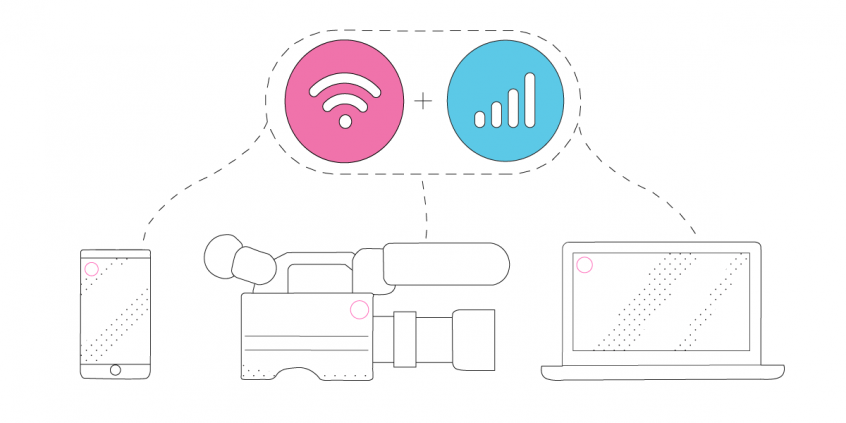[VIDEO] Raspberry Pi IRL Streaming Hotspot with Bonded LTE

How to Build a Raspberry Pi Powered IRL Streaming Wi-Fi Hotspot with Failover Protection
IRL streaming is a trending subject nowadays – if you’re not doing it, chances are you’re watching someone who is. But for those who live stream, the biggest issue is finding a reliable Internet connection that doesn’t disconnect. Following many requests from our readers and users, today we’re showing you how to create a Wi-Fi hotspot that won’t disconnect from the Internet with a Raspberry Pi. You will be able to use this with your video streaming device – Go-Pro, camera, smartphone.
What We Want: Uninterrupted Internet for IRL Streaming
Many will argue that IRL streaming can be done with just your smartphone, using cellular data, or by using your smartphone as a Wi-Fi hotspot for your Go-Pro or video camera. This is true in some cases, but certainly not in all of them.
Cellular coverage is not homogenous or ubiquitous, especially when you’re at the outskirts of a city, or in an area that’s prone to poor mobile signal, like an underground passage or inside a building. That’s why it’s important to get your Internet from at least 2 different cellular carriers. This way, if one’s network fails, you can use the other.
But there’s one more thing: suppose you have 2 Internet sources with you. What will you do when one of them fails? Stop the IRL stream, setup the other connection and then resume it? That’s a big faux-pas! You need a channel bonding service that can combine BOTH sources into one solid and stable connection. You need Speedify bonding VPNto create an IRL streaming hotspot by bonding connections from 2 smartphones!
Requirements for the Raspberry Pi IRL Streaming Hotspot
For uninterrupted IRL streaming, we used the following parts:
- Portable USB-C battery pack – to power the Raspberry Pi and, if needed, the smartphones you’ll use for connection bonding
- Raspberry Pi 4
- Smartphone or other WiFi-enabled camera to record – Go-Pro, etc.
- Smartphones that you will tether to the Pi via USB
- Backpack to carry the devices
How to Build the Raspberry Pi IRL Streaming Hotspot
Here are the steps you need to follow:
- First, you’ll need to install Speedify on the Raspberry Pi.
- Ready to do some IRL streaming? Make the Pi portable and functional by plugging it into the battery pack.
- Next, connect as many smartphones or cellular adapters as you can to the Pi and enable tethering. Make sure you leave the Pi’s internal Wi-Fi card not connected so you can use it as a connection sharing interface.
- To start the Wi-Fi hotspot, turn on Speedify and enable sharing.
To share over a Wi-Fi hotspot, select wlan0 as the sharing interface. Set a custom SSID and password for your hotspot and restart Speedify to apply the changes. If you’re using Speedify on the Pi graphically, you should see the connections show up as connection bubbles on the Speedify dashboard. - Put everything into a backpack and connect to the hotspot on the device you plan to live stream with. If you’re using a smartphone as your streaming device, you can also run Speedify on it. This way, you’ll combine the bonded connection from the Raspberry Pi via Wi-Fi with your cellular connection!
The final result: we used the Streamlabs app to customize our Twitch streaming settings. While connected to the hotspot we were able to IRL stream in HD on the go, without worrying about weak signal. Check out the videos on the Connectify Twitch channel.
Download Speedify
Speedify is the only app that combines your wifi, cellular, wired, and even your friend’s phone signals – into one ultra-fast and super secure link that keeps you all connected for the best possible live streaming, video calling, or just posting to your favorite app.
Subscribe to Speedify on YouTube
Get news, success stories, and our weekly livestreaming show Speedify LIVE! Tune in to chat and ask questions or to yell at us if that makes you happy. We're from Philly, we can take it.




